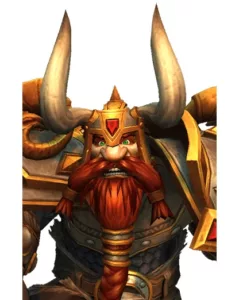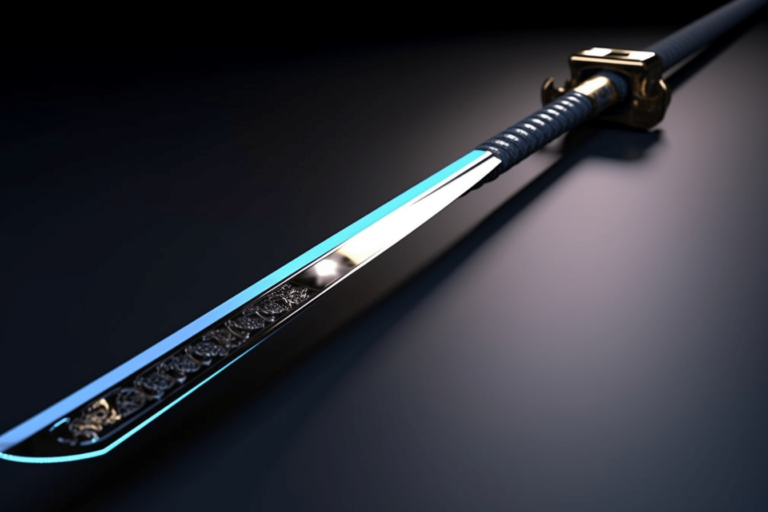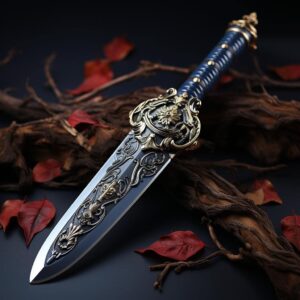
Swords and blades are one of the common weapons associated with fantasy games, especially in role-playing, medieval, and action-packed themed games. These fantasy games take us back to the era of swords and magic, where players are set to control a character in a quest for glory and to save the world.
But swords are not only a thing for video games. They are also mentioned in abundance in old mythologies, Legends, and fantasy novels. Swords like Excalibur in the Legend of King Arthur, Harpe in the Greek Mythology, and Anduril from The Lord of the Rings are a few famous sword names examples in works of literature today.
We know you share the same interest in the names behind the swords and how sword names are created! In this article, you’ll get to know a brief overview of sword types in fantasy narratives including some famous fantasy sword names in video games associated with these types. Not only that, get to know some of the art in naming a sword, including some sword name ideas that you can use for your next campaign or novel. We’re as excited as you so let’s jump into it!

There are hundreds to probably a thousand types of swords all over the world, with some already forgotten or not written in history. But among the many sword types, you’ll notice that there are a few repeatedly used swords that have entered popularity in media and literature. In this section, we’ll discuss some of the common sword types used in the fantasy worlds both in video games and in literature.
Sword types are a classification of swords based on their origin and use. In general, swords are just any weaponry that has a sharpened double edge, and this double edge may vary depending on the artisan who made it, and the design intended for the usage of the weapon itself. Just like technologies, swords have evolved and have received improvements together with the advancements of knowledge and skill of the people during ancient times. From simple doubled-edged knives, swords eventually became bigger, stiffer, or broader. Below are the common sword types based on how its feature and function.
Straight Swords, as its name suggests, are swords that are built with straight blades and are commonly double-edged. It is designed and optimized for balance and is usually lighter. Straight swords are common in medieval Europe and some parts of Asia. A few existing straight swords are the Arming Sword (or the Knightly Sword), the Bastard Sword (or the Long Sword), and the Broadsword (such as a Claymore). Straight swords are also very common in some video games such as The Witcher, Mount&Blade, Dark Souls, and The Elder Scrolls.
The Curved Sword, often called Curved Blade, is characterized by their curve blade shape. The curvature of the blade varies dramatically on the curve blade itself, with some being slightly curved, while others being extremely arced. The curve shape of the blade lessens the air drag during slashing, making it an ideal slashing weapon rather than a thrusting weapon. Unlike straight swords, a Curved Sword is single-edged only. The most common Curved Sword known in history are the Scimitar, Cutlass, Sabre, and Falchion. Below are some examples of named curved swords in fantasy video games.

Thrusting swords are designed to penetrate thick armor through piercing strikes instead of the usual slashing motion required for straight swords and curved swords. The most common thrusting sword is the Estoc, also known as a tuck or a panzerstecher (armor piercer). It is the most common sword used by cavalrymen in the late 16th century due to the abundance of infantrymen wearing thick cuirasses which common swords and sabers cannot penetrate. Some other common thrusting swords are the Rapier, the Epee (used for sports fencing), and the Side Sword (Spada da Lato). Below are some examples of thrusting sword names found in fantasy video games.
Not all curved swords are single-edged. There are also single-edged straight swords that are made to fully utilize the slashing motion on a single side of the sword. A single-edged sword concentrates the weight and sharpness of the sword into a single cutting edge, making it more effective for slashing compared to the much more brittle double-edged sword. A few examples of single-edged straight swords are the Harpe (Greek), the Machete (Central America), Yatagan (Ottoman), and the Straight Saber (European). Some examples of single-edge swords with names can also be found in video games:
Japanese swords are considered a separate category because of the unique sword designs that only originate in Japan—and can never be found in other countries, unlike the aforementioned sword types. A Japanese sword is distinguished for its strong curve design that has an equally sharp edge and pointy tip. They can be used to slash and thrust and are usually forged stronger compared with European straight swords and Middle-Eastern curved swords. Some examples of Japanese swords are the Uchigatana (Katana), the tachi, the odachi, and the wakizashi. Below are some of the popular Japanese sword names in gaming history.
Fantasy swords types are swords that are unconventional and do not exist in real life. They are often a product of artistic imagination and can be found in novels or video games. Although we mentioned some fantasy swords above, they still fall into specific categories of sword types. Fantasy swords mentioned here do not fall into any sword types mentioned above. Below are a few examples of Fantasy swords from video games.
We were able to discuss some of the most popular names for swords in the previous section. In this section, we are going to introduce to you some of the things we need to know to create our version of sword names. As a starter, let’s try to understand how swords are named and what is the art behind the names of a sword.
As to the question of why swords were named is directly answered by J.R.R. Tolkien in his legendarium. In Tolkien’s work on the mythology of Middle Earth, weapon naming (including other weapons aside from swords), is a tradition done by both the Eldar (Elves) and the Edain (Men). They give names to their weapons based on the unique feat or accomplishment that the weapon helped to achieve. This includes deeds in battle, characteristics, and purpose of the weapon, popularity of the owner, and the creation of the weapon during unusual circumstances.
This holds for most mythologies, novels, video games, and in real history! Evidence of weapon naming can be found in Old Norse Mythology, and Old English scriptures, which is proof that people during the Iron Age until the Viking Age and Medieval Age will tend to put names on their priced weapons. Swords, in particular, can be named based on their achievement in battle, characteristics, or the wielder or owner. Some of the common historically named swords are the Durendal (The Sword of Roland, Paladin of Charlemagne), Joyeuse (Sword of Charlemagne), and the Curtana (Sword of Mercy, a ceremonial British sword).

To summarize, sword names are created based on their accomplishment, characteristics, purpose, and the name of the owner. Taking all of these into consideration, we can create our version of the sword name easily.
The best start to creating sword names is to think of the background of the sword itself. Where the sword came from? What is its backstory? By knowing this, we can easily create words related to its purpose and background and transform it into a nice memorable sword name.
Second, if you haven’t thought of a background, why not think about the purpose of the blade in your story or plot? Will the blade be used to murder people? You can it “The Cleaver”, or “Ripper”. Will the blade be used to fight the forces of darkness? You may call it “Ray of Hope” or “Salvation”. There are a lot of terms and phrases you can use when you know the purpose of the sword.
Lastly, you can create invented words or words coming from mythologies, other languages, or fictional languages. Take a look at Tolkien’s sword names like Glamdring, and Ringil—which both came from an invented Elven language. The Kampilan is a nice sword name that is borrowed from the Filipino language. Gugnir is a mythological sword from Norse mythology. All in all, you can take inspiration from these and create your sword name versions.
Sword Name | Meaning |
Kusanagi-no-tsurugi | “Grass-cutting Sword”, one of the three Imperial treasures of Japan. |
Thuận Thiên | “To Comply with Heaven”, the said sword of the Vietnamese Emperor Lê Lợi who freed Vietnam from the Ming Dynasty of China. |
Sword of Mars | Also known as “Sword of Attila the Hun”. It is the sword wielded by Attila, the ruler of the Huns, and was associated with the Roman god of war, Mars. |
Reichsschwert | Also known as “Gladius Imperatoria” in Latin, or “Imperial Sword” in English. It is one of the important artifacts from the Holy Roman Empire given to the emperor together with the Imperial Crown, Imperial Scepter, and Imperial Orb. |
Szczerbiec | “The Notched Sword”, was used primarily during the coronation of kings of Poland. |
Sigismuntus Iustus | “The Sword of Justice of Sigismund”, is the sword used by King Sigismund I the Old of Poland. |
Shichishito | “Seven-Branched Sword”, a ceremonial sword believed to be given by the king of Baekje to a Yamato ruler. |
Osman’ın Kılıcı | “Sword of Osman”, the sword of Osman I, the founder of the Ottoman Empire. |
Ulfberht | A mysterious Viking sword associated with the word “wolf” (ulf), its origin is unknown but archaeologists believe that this is a trademark name or a famous Nordic smith. |
There are only a limited number of sword names in our history due to most of them being forgotten in history or being lost in service in wars and battles. Despite that, we still have not tackled some of the famous Sword Names to exist in literature, series, or movies. In this section, we’ll be giving you a list of some of the most renowned fantasy sword names around. Check them out below.
The Orcrist, also called the “Goblin-cleaver”, was introduced in one of J.R.R. Tolkien’s books, The Hobbit. The sword name “Orcrist” was originally an Elven sword forged in Gondolin, and the partner of Glamdring, another Elven sword. Both swords were lost during the sack of Gondolin and were found by Thorin Oakenshield during the second age.
The sword Hrunting was given to Beowulf by Unferth during his fight against Grendel’s mother. Hrunting is said to possess great powers and has never worn out and failed anyone who wields it in battle, according to the Beowulf Poem.
The Stormbringer is a huge magical black sword inscribed with runes. It was created by the forces of Chaos and has its mind and will. The Stormbringer can cut through any material unless protected by strong magical protection. It drinks and feeds on the soul of any living creature it pierces.
The sword Samehada (translates as Shark Skin), is a sentient sword passed down to members of the Seven Ninja Swordsmen of the Mist Village. It is considered the most frightening ninja sword for its ability to feed on a shinobi’s chakra—including its owner. Kisame Hoshigaki was the recent owner of the blade until it betrayed him and went to Killer Bee for its much more “delicious” chakra.
Zangetsu (meaning Slaying Moon), is the Zanpakuto (Soul-Cutter Sword) of Ichigo Kurosaki. He is the result of the merging of the Hollow White (inherited by Ichigo from his mother) and Shinigami powers (from Ichigo’s father). Zangetsu allows Ichigo to take the form of a Hollow by lending its inner hollow powers to him.
The Master Sword is the end-game weapon in most of the Legend of Zelda game series. It is said to be crafted by the goddess Hylia as a Goddess Sword and eventually reformed into a Master Sword by the Goddess’s chosen hero. It is used to repel forces of evil and most of the time, the final bosses of the campaign.
The Demon-Slayer Sword (also known as the Black Divider) is an Anti-Magic weapon that can nullify almost any kind of spell it gets in contact with. Its flat and broad shape can be used to block or deflect offensive magic, while its blade edge can be used to cleave a wider area. It is currently in possession of Asta, a member of the Black Bull Squad of Magic Knights.
Gurthang, meaning “Iron of Death”, is also known as Gurtholfin or “Wand of Death”. It is a black sword reforged from the shards of Anglachel, one of the swords forged by Eol the Dark Elf. The black color of the blade came from the color of the meteorite from which it was formed. Despite being black, it glows with a pale fire within it. It is the same sword that allowed Turin Turambar to do great, but sometimes senseless acts. It shattered into pieces when he killed himself with the sword.
Anduril, also known as the Flame of the West, is a sword reforged from the broken shard of Narsil, the sword of Elendil that cut the One Ring from the fingers of Sauron. It was given by Elrond of Rivendell to Aragorn II Elessar for him to claim the throne of Gondor as the rightful heir of Isildur.
The Sakabatō (Reverse-Blade Sword) is the renowned sword of Himura Kenshin, forged by master swordsmith Arai Shakku. It is an odd weapon with its sharpened edge found on the opposite side of the blade. It was forged as a holy sword, an offering to honor the peaceful Meiji Era. It also signifies the end of Himura Kenshin’s work as a hitokiri (man-slayer or assassin).
You have witnessed a lot of sword names just by reading through our sword name guide. But have you considered giving your sword name a cool name? A Cool sword name is defined by being intriguing, interesting, memorable, and cool-sounding. While there might be many definitions of cool sword names, the most important aspect is the meaning behind the name or the story behind it. Check out some of the best examples of cool sword names and their meaning.
Sword Name | Meaning/ Story |
Blitz | “fast”, ideal for a lightweight sword |
Vindicator’s Edge | A sword name ideal for a truthful and just swordsman |
Blarandr | From the Norse “blar” (black) and “brandr” (blade); a black blade. |
Solstice | “Shortest or Longest Day”, is a perfect sword name representing day and night—a balance between the two. |
Severity | Describes a sword that can inflict painful or lethal wounds. |
Fuego | “Fire” in Spanish, an ideal name for a fire-red blade, or a flaming sword. |
Kasiraan | “Destruction” in Filipino. A nice sword name for a very destructive sword. |
Godswrath | “God’s Wrath”. An ideal name for a holy blade that can indict judgment to evil. |
Novskera | From the terms “Nova” (explosion) and “skera” (to cut). A magical sword name for an overwhelmingly powerful sword. |
Tundra | “Treeless Plain”, is often associated with mountains or lands with cold climates. This is an ideal sword name for a frost-imbued sword. |
Sometimes it is tedious to think of unique sword names for your story, campaign, or games. To address the need for producing sword names, readily available sword name generators online can be used. A sword name generator is a sword-specific name generator that gives name suggestions for your story. On top of that, these name generators are automated, powerful, and unique. They are very helpful for game designers and creative writers because they speed up name searching and name formulation. Users can use the suggested names of the name generator and modify it as they see fit—or they may use the name as is without violating any copyrights for the name!
There are a lot of name generators online, it would be great if you choose a sword name generator that can give you more cool and realistic names. Some of the few things you should look into when looking for an ideal sword name generator are:
Additionally, a good sword name generator should follow the correct naming conventions we use to name swords.
Sword name generators are free to use and can be accessed online via browsers—no need to download! This makes it more versatile and “on the go” when you need it most. Don’t be shy and try a sword name generator now!
To wrap things up, here are some of the main ideas you discovered while reading our article.
Swords and blades are one of the common weapons associated with fantasy games, especially in role-playing, medieval, and action-packed themed games. They are also a major concept mentioned in old mythologies, Legends, and fantasy novels.
There are 6 main Sword Types according to their distinct features:
Sword names are created based on their accomplishment, characteristics, purpose, or based on the name of the owner. To make sword name generation easy, one can use a Sword Name Generator.
A sword name generator is a sword-specific name generator that gives name suggestions for swords. These name generators are automated, powerful, and unique—which are very helpful for game designers and creative writers who want to speed up name searching and name formulation. They can use the suggested names for free without violating any copyrights for the name,
